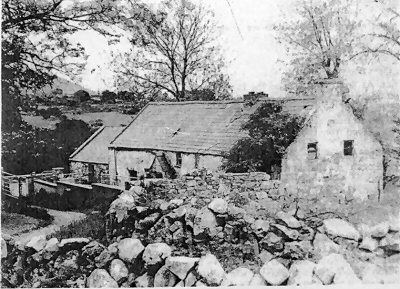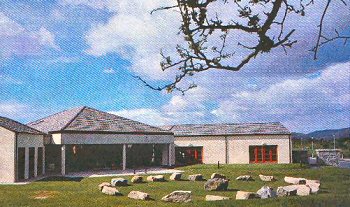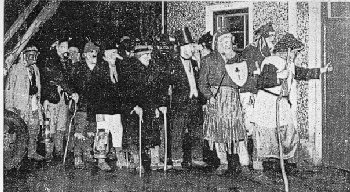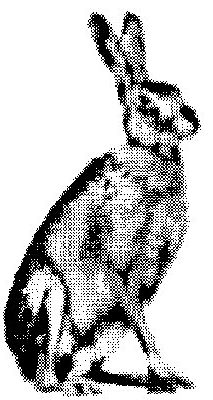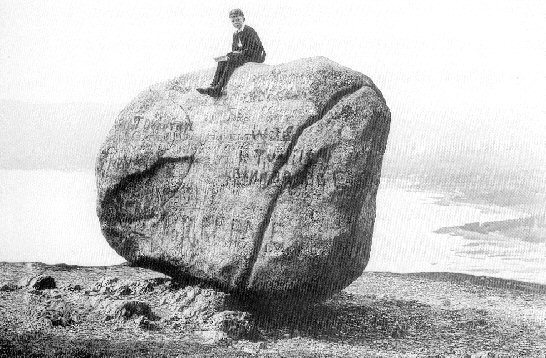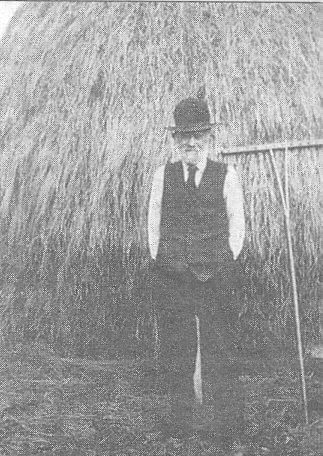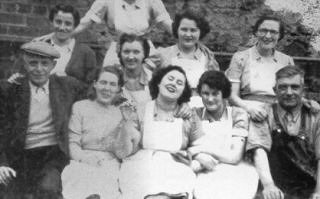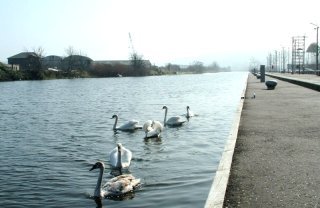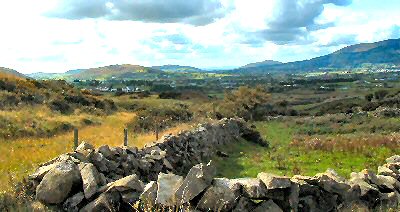The Mummers tradition, I am told, was brought here with the Planters and might still be experienced in England’s South-West counties. Rose McKeown of Sheetrim tells me they were still doing the rounds in that vicinity up to the early Sixties. She has that character too as Wee Dibbley Doubt.
They would cover an area of about five miles circumference. This group had a French Fiddle (harmonica) for accompaniment and sang the popular songs of the time. Besides the characters aforementioned she remembers King George. They would perform in the kitchen, never getting access to ‘The Room’ which was far too grand for them! The gloom of the old oil lamp added to the air of mystery!
At some houses they would get nothing and at others they might get as little as a sixpence, though half-a-crown was common. By then they were primarily interested in the money. She remembers giving a ten-shilling note. She tells of one disguised figure commenting on her new Cuckoo Clock. These were imported from Germany and hers was purchased above in ‘Cross (Carrickmacross) by her husband for seven pounds and ten shillings; a fortnight’s wages then. Naturally she was very proud of it and it ‘cuckoo-ed’ non-stop for nigh on twenty years.
Anyway when yer man commented on the clock he used her first name and an undisguised voice. She recognised him as a former ‘flame.’ Perhaps that accounted for the generosity!
But I was trying to complete the script!
CROMWELL
Here comes I, Sir Oliver Cromwell. As you may suppose
I have conquered many nations with my long and copper nose
I have caused my foes to tremble, and all my enemies to quake
Sure I bate me own companions till they were no longer fit to spake.
I shot the devil through a reel
And through an oul’ spinning wheel
Through a bag of pepper
Through a horse-shoe cocker.
Such a man was never known
And if you don’t believe the words that I say
Enter in Saint Patrick and he will clear the way.
SAINT PATRICK
Here comes I Saint Patrick in my shinin ‘ armour bright
I was once a noble champion, but now a worthy knight
I fed my sheep on oats and hay
And after that I ran away
If you don’t believe the words that I say
Enter in Beelzebub and he will clear the way.
BEELZEBUB
Here comes I Beelzebub
And over me shoulder I carry a club
And in me hand, a dripping-pan
And I count myself a jolly fine man.
And if you don’t believe the words that I say
Enter in Big-Bellied Ned and he will clear the way.
NED
Here comes I Big-Bellied Ned
If ye can’t give me money give me plenty of bread
For when I was young I was not well-fed
But now they call me Big-Bellied Ned.
If you don’t believe in the words that I say
Enter in Big Head and he will clear the way.
BIG HEAD
Here comes I that niver come yit
Big Head and little wit
The more me head’s so big, the more me body’s small
But I’ll do me best to plaze ye all
And if you don’t believe the words that I say
Here comes Wee Divil Doubt and he’ll clear the way.
DIVIL DOUBT
Here comes I, wee Divil Doubt
If ye don’t give me money I’ll sweep ye all out
(my mother has this line…The tail of me shirt is hanging out..)
Money I want and money I crave
If you don’t give me money I’ll sweep ye till your grave.
And if you don’t believe in the words that I say
Enter in Johnny Funny and he will clear the way.
We have earlier quoted Johnny Funny’s lines and the final chorus.
End…
